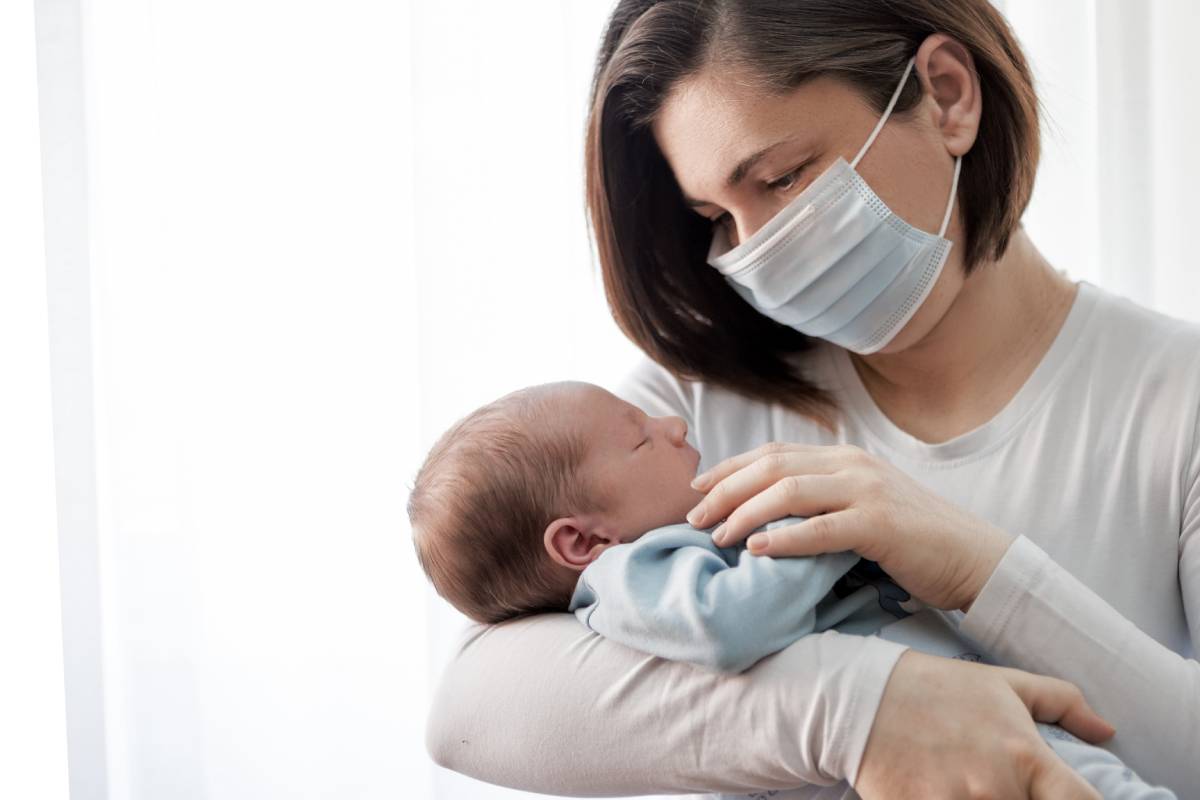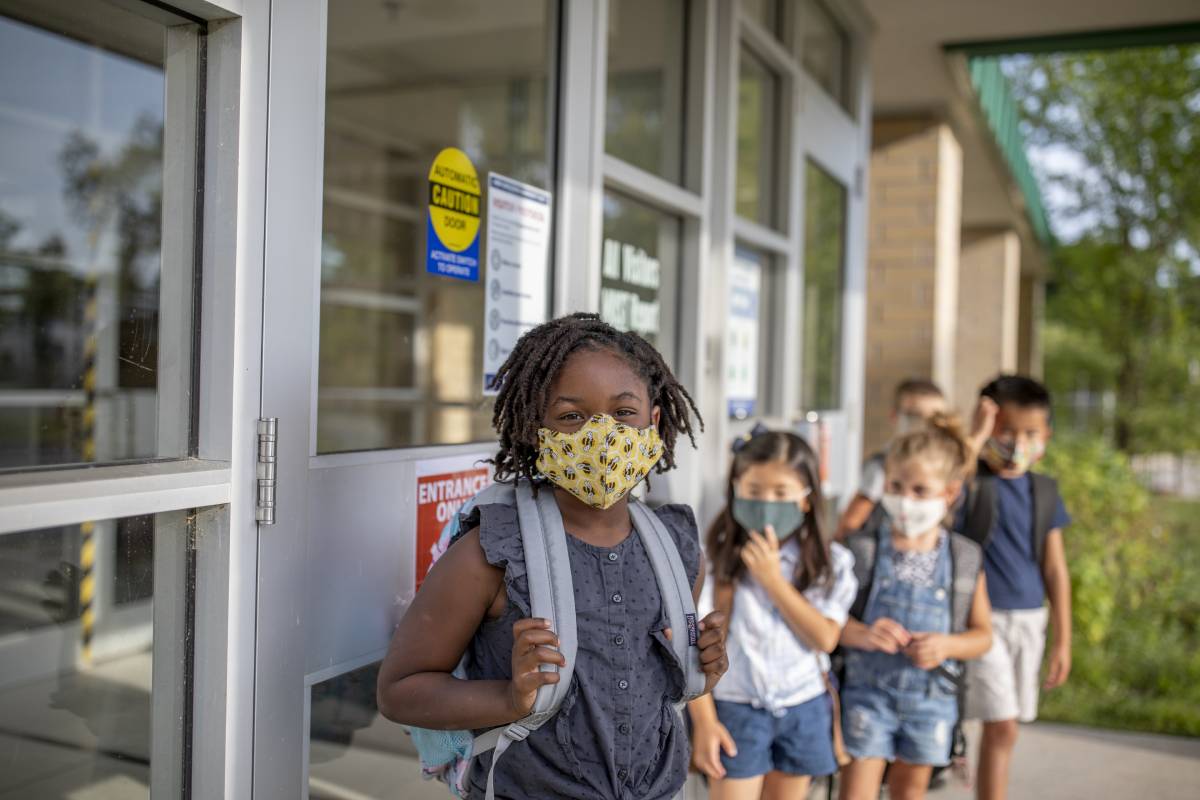
Babies and toddlers may be more likely to transmit the virus that causes COVID-19 to others in their households compared to teenagers, a new study has found (Paul et al., 2021). Since early 2020, the coronavirus pandemic has overwhelmed countries all around the world. In the United States, the number of deaths from coronavirus is nearing 642,000, with an increase in cases, hospitalizations, and deaths in recent weeks (CDC). This study, which was published last month in JAMA Pediatrics, does not resolve the ongoing debate over whether infected children are as contagious as infected adults, nor does it suggest children are drivers of the pandemic. The study does, however, demonstrate that very young children can play a role in the transmission of COVID-19.
Researchers at Public Health Ontario, a Canadian public health agency, analyzed Ontarian health records from June 1 to December 31, 2020, and identified 6,280 households in which a child (0-18 years old) was the “index case” – the first person to develop COVID-19 symptoms or test positive for the virus. Then they looked for “secondary cases,” others in the household who got sick in the two weeks after the first child became ill (Paul et al., 2021). In most cases, the chain of transmission stopped with the infected child, but in 27.3% of households, children transmitted the virus to at least one other household member (Anthes, 2021). Another takeaway was that adolescents were most likely to bring the virus into the home, with 14–17-year-olds making up 38% of index cases (Paul et al., 2021). The study’s key finding, however, was that the odds of household transmission of COVID-19 were roughly 40% higher for infections in children 3 or younger compared to children between 14 and 17 (Paul et al., 2021). Behavioral differences might explain this finding, as babies and toddlers often require close contact and hands-on care. “The 0-to-3-year-old child is held differently, is cuddled,” offered Dr. Paul Offit, professor of pediatrics in the Division of Infectious Diseases at Children’s Hospital of Philadelphia (Salzman et al., 2021). And when young children are sick, for example, they cannot be isolated.
This study updates experts’ understanding of COVID-19 transmission risk. Earlier in the pandemic, some scientists suggested the risk of COVID-19 transmission declined with younger age, though this assumption was likely biased by the fact that lockdowns and social distancing limited social encounters for young children (Choi, 2021). These new findings suggest the opposite, and Dr. Edith Bracho Sanchez, a primary care pediatrician and assistant professor of pediatrics at Columbia University Irving Medical Center, said that the study “just shows how humble we have to be when it comes to children and this virus. We always knew children could get it, could transmit it, and could get sick with COVID,” she continued (Salzman et al., 2021). “I think we’re learning more and more just how much.”
The study was conducted in 2020, before the delta variant emerged, so further research is necessary to understand transmission risk in the context of the variant and other potential variants. The study also took place before vaccines were available, so all household members were unvaccinated (Paul et al., 2021). Still, its findings reinforce the importance of implementing and maintaining mitigation strategies at schools and childcare facilities, especially as a new school year begins and more children are returning to school in-person. Strategies such as frequent cleaning, good ventilation, distancing, and masking when possible are essential. The study also reaffirms the importance of vaccination for all eligible people over 12, especially those that spend time with children (Salzman et al., 2021).
References
Anthes E. (2021, August 16). Babies and Toddlers Spread Virus in Homes More Easily Than Teens, Study Finds. New York Times. https://www.nytimes.com/2021/08/16/health/covid-kids-toddlers-transmission.html.
Centers for Disease Control (CDC). COVID Data Tracker, Updated Daily. U.S. Department of Health and Human Services. https://covid.cdc.gov/covid-data-tracker/#datatracker-home.
Choi J. (2021, August 19). Younger children more likely to spread COVID-19 to households than older kids. The Hill. https://thehill.com/policy/healthcare/568627-younger-children-more-likely-to-spread-covid-19-than-households-with-older.
Paul LA, Daneman N, Schwartz KL, et al. Association of Age and Pediatric Household Transmission of SARS-CoV-2 Infection. JAMA Pediatr. Published online August 16, 2021. doi:10.1001/jamapediatrics.2021.2770
Salzman S., Richter Lauren R. (2021, August 16). Younger children more likely to spread COVID-19, study finds. ABC News. https://abcnews.go.com/Health/younger-children-spread-covid-19-study-finds/story?id=79480836.

